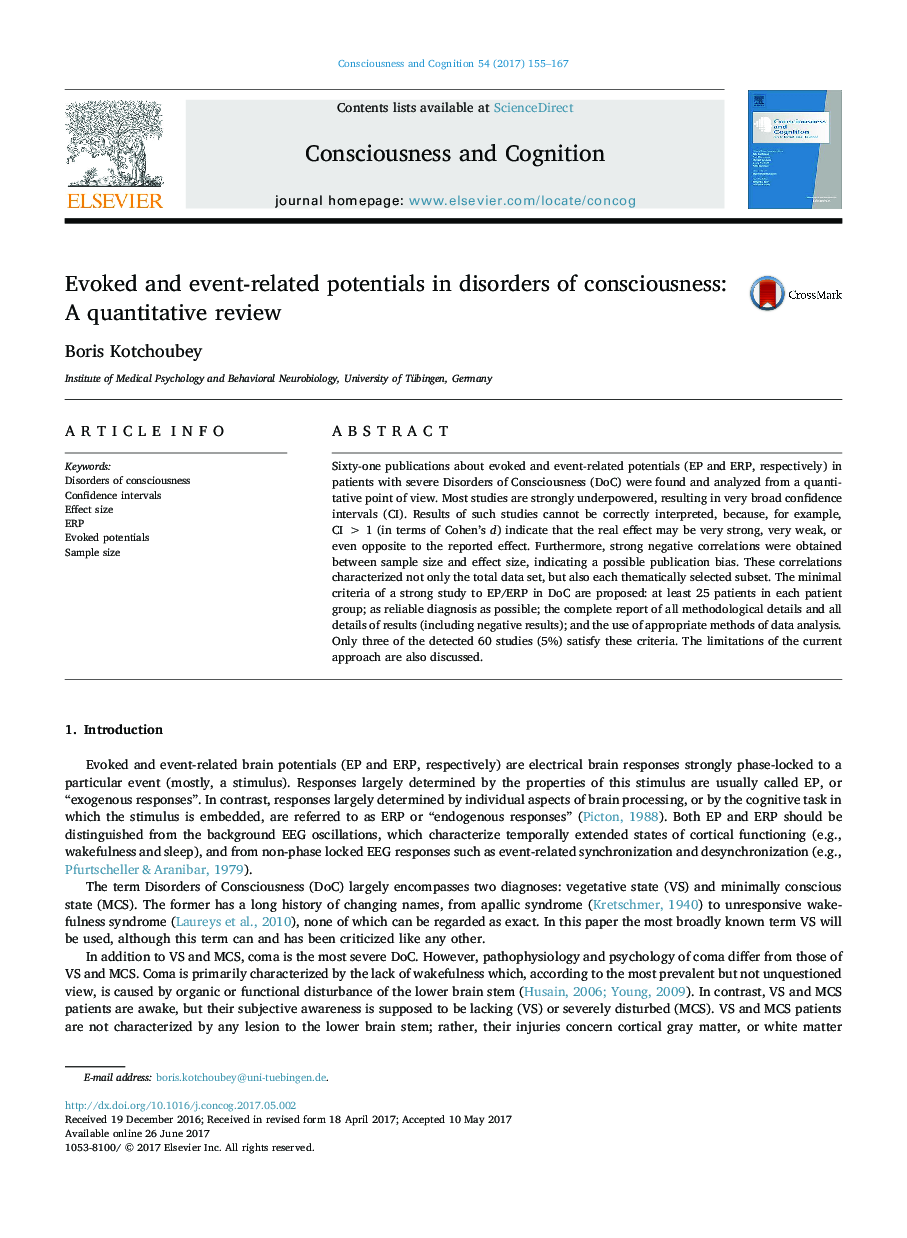| کد مقاله | کد نشریه | سال انتشار | مقاله انگلیسی | نسخه تمام متن |
|---|---|---|---|---|
| 5041730 | 1474157 | 2017 | 13 صفحه PDF | دانلود رایگان |
- Most publications to EP and ERP in disorders of consciousness are strongly underpowered.
- Only a few studies are based on samples sufficient to make a reliable conclusion.
- There is evidence for a strong publication bias in favour of positive results.
- Descriptive reviews that do not report methodological details can misinform readers.
Sixty-one publications about evoked and event-related potentials (EP and ERP, respectively) in patients with severe Disorders of Consciousness (DoC) were found and analyzed from a quantitative point of view. Most studies are strongly underpowered, resulting in very broad confidence intervals (CI). Results of such studies cannot be correctly interpreted, because, for example, CIÂ >Â 1 (in terms of Cohen's d) indicate that the real effect may be very strong, very weak, or even opposite to the reported effect. Furthermore, strong negative correlations were obtained between sample size and effect size, indicating a possible publication bias. These correlations characterized not only the total data set, but also each thematically selected subset. The minimal criteria of a strong study to EP/ERP in DoC are proposed: at least 25 patients in each patient group; as reliable diagnosis as possible; the complete report of all methodological details and all details of results (including negative results); and the use of appropriate methods of data analysis. Only three of the detected 60 studies (5%) satisfy these criteria. The limitations of the current approach are also discussed.
Journal: Consciousness and Cognition - Volume 54, September 2017, Pages 155-167
